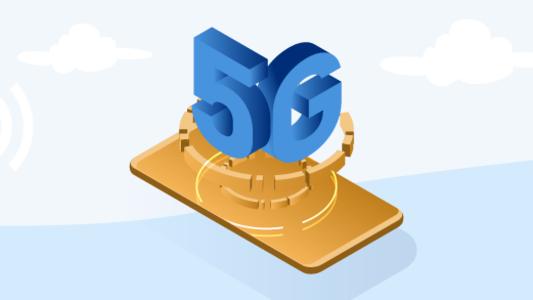What is GPON Broadband Technology? Here Is Everything You Need To Know
Are you wondering about GPON broadband technology and how it revolutionizes internet connectivity? Dive into this comprehensive guide where we uncover the intricacies of GPON (Gigabit Passive Optical Network). From its architecture to its advantages, get ready to explore how GPON is reshaping the landscape of broadband services and enhancing user experiences.
We receive broadband internet at our doorsteps primarily in two ways, namely, wired and wireless networks.
On the one hand, wired networks use ethernet cables to provide internet to our laptops and computers. On the other hand, wireless networks use Wi-Fi routers, enabling multi-device connections to a single broadband network.
The Passive Optic Network (PON) has existed since the mid-90s with the emergence of fiber optics and has been steadily evolving ever since.
The PON technology employs fiber-optic cables to deliver ethernet connectivity to the endpoints from the primary data source. This technology is capable of carrying Asynchronous Transfer Mode (ATM), Ethernet and Gigabyte traffic.
The Gigabyte Passive Optic Network (GPON full form) is one of the most efficient ways to provide fiber to the home. Why? Because it can deliver 2.488 Gbps download speed and 1.244 Gbps upload speed.
GPON Technology Basics
The GPON broadband technology is indeed the next big evolution in terms of structured cabling. It employs fiber-optic broadband connections to generate a unique multipoint network enabling individual end-users (connected to the same network) access to all-fiber technology to any ethernet endpoint. In addition, encryption is deployed to keep every user’s data secured and private from other users.
The most significant advantage of the GPON technology is its massive improvement in data transmission distance and bandwidth.
Now let us dive into this technology’s benefits.
Main Features of GPON Systems
The main features of the GPON broadband technology include –
- Supporting of TDMA (Time Division Multiple Access);
- Transitting data on exclusive timeslots;
- Coupling of signals on optical splitters;
- Detecting and preventing collisions.
Benefits of GPON Broadband Technology
The GPON technology carries a wide array of benefits in today’s ever-growing world –
Data Transmission Over Greater Range
In places where traditional copper cables have a 100-meter range, the GPON broadband technology can transmit data signals from 10 to 20 km. What does this mean? It means that even if a user is situated far away from his/her internet service provider (ISP), the GPON system can continue to deliver high-speed internet despite the long distance.
Fast Speed
The GPON Broadband technology is built up of fiber optic cables which are in turn made of glass strands (which are as thin or thick as human hair). These glass strands can transmit data signals at the speed of light. (Yes, that’s true).
The GPON system provides high-performance bandwidth of up to 5 Gbit a second downstream and 25 Gbps up to the hub. What? Are you serious? Yes, we are. We also know that such speeds are practically impossible to achieve by traditional copper wires over long distances.
Environment-Friendly
Fiber optic cables, compared to traditional copper cables, are way thinner, thus saving underground and above the ground space and efficiently transmitting data signals to its users.
Additionally, the GPON technology uses fewer components, most of which do not have strict specific temperature needs. Lastly, fiber optic uses less air-conditioning and electricity from the backend – thus making it a fantastic environment-friendly broadband solution.
Technology Sophistication
The GPON broadband technology has several features that make it sophisticated when compared to other technologies. For instance, it can make use of burst modes. What does that mean? It means that high-speed data transmission happens via statistical usage capabilities, which in turn facilitates bandwidth’s dynamic sharing and control.
Additionally, it also enables the internet service providers to offer their customers a minimum guaranteed bandwidth at peak time. So it is a win-win situation for the ISPs and the users.
Did you know According to Global Forecast to 2025 by Markets and Markets, the global GPON market size is estimated to grow to USD 8.3 billion by 2025 from USD 6.3 billion in 2020 (i.e., 5.8% CAGR). The market growth is pushed by the high GPON networks demands for triple and quad-play services, growing high-speed broadband services demand, continuous sophistication in GPON technology, and trial and deployment of the 5G services.
The same study also claims Asia Pacific to be the largest market GPON during the forecast period, with the key market players being Huawei (China), Nokia (Finland), ZTE (China), FiberHome (China), DASAN Zhone (US), Calix (US), and ADTRAN (US) as of 2019.
How does GPON Broadband Technology Work?
In tech freaks reading this content, GPON systems comprise of optical line terminals (OLTs) that connect various optical network terminals (ONTs/ONUs) using a passive optical distribution network (ODN).
Its usage of passive splitters in the ODN allows one single feeding fiber from the ISPs to provide high-speed internet to multiple houses and offices.
In short,
Step 1: First, OLT sends a one-point signal via the ODN
Step 2: Next, the splitter breaks into multiple signals
Step 3: As a result, multiple ONT/ONUs now receive signals.
Are there any drawbacks of GPON Broadband Technology?
A GPON system’s benefit list is undoubtedly heavier than its drawback list. Perhaps the only drawback is the sensitiveness of fiber-optic cables to kinks. Therefore it is downright not recommended to lay them around the apartment/house, put them in the baseboards. If done so, then users can expect breakages in cables or a decrease in bandwidth.
Secondly, the installation cost of traditional broadband copper cables is still more affordable than that of fiber-optic technology. However, with the rise in user base, the cost of infrastructure will also be more acceptable.
Conclusion
We at Selectra are confident that the GPON broadband technology has a wide range of uses in today’s ever-changing and internet-heavy world. GPON’s user-friendliness, stability, and promising future is fueling confidence in its buyers.
We hope this small guide helps you understand the technology better.









